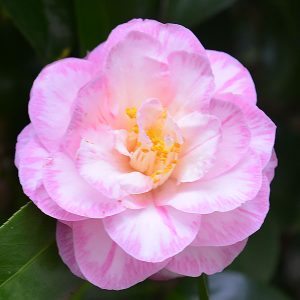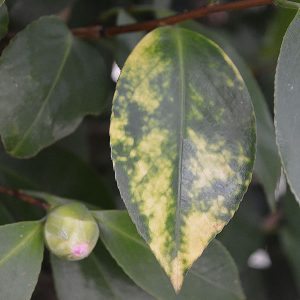
Like all plants Camellias do have a few problems and are subject to a few diseases and insect attacks. In general they are however very easy care and hardy plants that require little more than pruning and fertilising if grown ninth right conditions.
With three main different types of Camellias, C. japonica, C. reticulate and C. sasanqua care will differ slightly.
Aphids and Thrips
Although not a common problem, Aphids can attack Camellias, especially the new flower buds. They do not usually do much damage, however sever infestations will damage the plant.
You can control Aphids on Camellias by hosing them off, squashing them, or use a spray. A pyrethrum spray is usually sufficient. Sprays such as Confider may be need for sever infestations.
Caterpillars
Again they do not usually do much damage. They can be seen in rolled up leaves where they make their homes. A simple spray with an all-purpose insect spray will sole major problems.
Scale
In itself, scale is usually a symptom of poor growing conditions. Lack of sun, poor soil and very dry conditions can all weaken the plant. Scale is best controlled by using a white oil designed for plants.
Other Camellia Diseases and Problems
Brown Leaves
This is usually caused by the sun, more common with C. japonica types. It can also be frost damage.

Yellow Leaves
This can be caused by mineral deficiency, also by cold weather or over watering. It can also be a natural part of the plants growth habit of some cameliias. Generally it is only a few leaves and these can simply be pruned away. If it is a mineral deficiency this can be solved by fertilising, best carried out in summer. The leaves will not turn back to green, however this should help prevent a reoccurrence.
Overall yellowing of a part of the bush is a different problem, it can be caused by canker. Look at the stem and see if you can see problems lower down the stem. You will need to remove infest parts and spray with a fungicide.
Buds Dropping Off Camellias
This is when buds form, and then turn brown and drop off before the flowers form.
You can try changing your fertilising time, do not over fertile and do not fertilise in summer or autumn, generally looking to the plants health is a solution.
Bud drop can also be caused by extremely dry soil.
Swelling in the leaf.
This is probably ‘Leaf Gall’, simply remove and dispose of the infected material.
